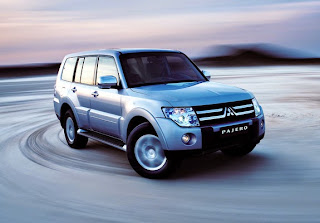For our first car feature this year, let us go back to 2007 and compare how the landscape had changed while we wait for the official figures. Do take note non-CAMPI members such as Mercedes Benz, Chrysler/Dodge/Jeep, Subaru, Jaguar/Land Rover, and Chery do not report their numbers so don't expect to see how they stack.
Segment Total: 13,980
In 2007, sub-compacts are on gaining traction with numerous models joining industry stalwarts Honda and Toyota. Hatchbacks are now accepted by the society while smaller ones such as the Kia Picanto and Suzuki Alto are just a minority, with the last two being separated in sales reports as a standalone category due to their increasing number in the following years.
Back in 2007, the compact car best seller was the Honda Civic, which sold more than the Toyota Corolla Altis. The former, in its FD chassis code, was the segment leader in 2006 and 2008 while its last top post is in 1999 and 2000. Later on, other brands pitted in their contenders but this category would slowly decrease in numbers later on.
In that year, everyone wanted a Toyota Camry and there was a long list for this vehicle. So popular other models were nearly ignored and notice at that wide gap between the second placer. Compared to today, there are a handful of models to choose from but the heart screams Camry for most buyers in this segment.
Redesigned for 2007, the Honda CR-V became the best selling compact SUV which had a lot of buyers fall in line for this one. Notice the Hyundai Tucson, at number two, had sold a lot than veterans from Ford and Nissan and became the segment leader for the years to follow and that's because of one thing the straight H brand lacks: a diesel.
Last year, this segment is the hottest with most models being replaced or upgraded at that time. Back in 2007, if there is one car that everyone desires, it is the Toyota Fortuner. Compared to the second place Ford Everest, the wide gap means that although while rivals did their best nothing beats Toyota. From 2009 until 2013, the Mitsubishi Montero Sport became the number one in this segment.
Consisting of expensive models priced above a million bucks, the best seller of this batch is the Mitsubishi Pajero whose two models (the Field Master and the modern BK/CK body) are sold at different price points. Other models that sold more than a hundred units included the Nissan Patrol and Ford's Explorer and Expedition.
For the year 2007, the Toyota Innova is the Philippines' best selling car with 10,500 units sold. This segment sold 24,000 units alone with other best sellers are coupled in this category alone. Surprises include the mini-MPV Toyota Avanza which placed second on this list and the Isuzu Crosswind beat the Mitsubishi Adventure for the fourth time (the former sold more between 2002 to 2004 and 2007 to 2008) and would never reclaim again.
Today, Toyota sold lots of Hiace vans ten or fifteen times more than it did in 2007. Back then, the Hyundai Starex and Nissan Urvan sold more than the vehicle in the first sentence. Among those vans that are targeted at the upper scale, the Kia Carnival, which was redesigned for that year, is the best seller.
By just a 12 unit difference, the Mitsubishi Strada became the segment leader for this time period. Redesigned in September 2006 and updated last August of that year, consumer interest piqued and do remember the Toyota Hilux was just ripe for an upgrade while the Isuzu D-Max got an update in the same year.
Segment Total: 19
Only three sports car models from mainstream brands are available back then. The Mitsubishi Eclipse is the newer model in this list, while the Hyundai Coupe is updated and can be only had through a by order basis, and the Nissan 350z is showing its age. Nowadays, sports cars can be had from Toyota to Ford in a wide variety of price and fun factor.
Segment Total: 974
When it comes to luxury brands, BMW is numero uno in this segment. Back then, Mercedes Benz sells well but their non inclusion means no numbers are reported and Lexus wasn't locally available (plus the JPEPA does not exist) so it means the Bavarian manufacturer takes the cake. On the other hand, Volvo sells more than Audi and Porsche (although the two latter brands are distributed by one company, when their numbers are combined means they sell more).
Source: http://web.archive.org/web/20081017073423/http://www.motioncars.com/autobuzz/articles58/campi_report.htm



















